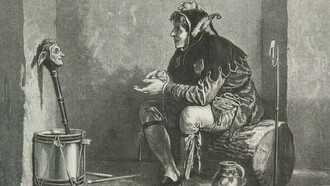With the example “the bag or the life”, Lacan seeks to demonstrate the absurdity of choice, which always implies the loss not only of what was not chosen, but also of what was supposedly chosen. By choosing the bag, one loses both the bag and the life; by choosing life, one chooses a specific life (a life without the bag). Extended to paradoxical conditions, truisms create the make-believe of choice.
Currently, in the Covid-19 pandemic, we have the equivalent with people who understand the need for isolation as a choice and not as something that is imposed. Choosing work and not isolation is ultimately choosing the possibility of getting infected and increasing the risk of dying. Staying at home is the obvious, inescapable, it should not even be thought of as a choice.
Certain situations remind us of Sofia’s choice: with her two children at her side, she must deliver one of them to be sacrificed; by not doing it, she would lose both of them. In this situation of explicit impotence and despair, what remains is the mother who, by having to choose, is already destroyed. A possible and transcendent reaction would be the “explosion” or assumption of impotence by this mother, even if the consequence would be the death of the three of them, so that she would not have to discover later that there are situations to which it is not worth surviving. What comes from this choice is not the triumph of a mother who saved one of her children, but rather a mother destroyed by unbearable guilt, what culminates in her suicide as relief, a delayed solution to accumulated despair.
The choice always reveals an impotence that wants to be metamorphosed. As in a new scenario, choosing, looking like something new, in fact always points to nonexistent perspectives. It is actually sad that people think they can choose – the fix is in already – it offers nothing new, just repeats evaluations, commitments, and alliances. When one is powerless, coopted, dehumanized, having to choose is a lie, an enticing make-believe.
There is no possibility of choice. When choice is suggested, enforced, it looks like a game with supposed criteria for solution, resembling Kafka’s cat-and-mouse fable:
Alas, said the mouse, the whole world is growing smaller every day. At the beginning it was so big that I was afraid, I kept running and running, and I was glad when I saw walls far away to the right and left, but these long walls have narrowed so quickly that I am in the last chamber already, and there in the corner stands the trap that I must run into. - You only need to change your direction, said the cat, and ate it up.
Lacan, Sofia, and Kafka are examples that summarize desires and lies that plague the individual when he/she pretends that what happens is not happening. In this sense, even mathematics is misleading: it is the classic six of one and half a dozen of the other, meaning something different for the same situation.
Sad is the one who thinks he/she can choose, when actually he/she just postpones and eternalizes conflicts. Choices are situations that make conflicts explicit; conflicts stem from division; and division refers to the possibilities of autonomy, submission, fear and cogitation about losses and conveniences. In other words, choosing is always a pragmatic and conflicting assessment dictated by fear and mainly by depersonalization.















